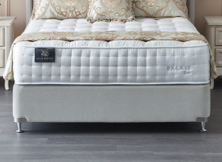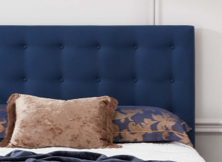The Link Between Clutter and Sleep
(And the 5-Minute Fix That Can Help)
You’ve put away your phone, brewed a cup of chamomile tea, and set your alarm for the morning. But if your nightstand is drowning in coffee cups, books, and tangled chargers—and there’s a mountain of clothes silently judging you from “the chair”—your brain might not get the memo that it’s time to rest.
Clutter isn’t just an aesthetic issue. Research shows that a messy sleep space can quietly interfere with your ability to relax, unwind, and get restorative sleep.

Why Clutter Affects Your Sleep
When your brain sees clutter, it doesn’t just see “stuff”—it sees unfinished tasks, decisions to make, and things you haven’t dealt with. This stimulates the brain and keeps it mentally active, even if you think you’ve switched off.
According to the Royal Australian College of General Practitioners (RACGP), our brains are wired for order, and clutter overloads our visual cortex, reducing focus and increasing mental fatigue (RACGP, 2023). Your brain essentially has to work harder to filter out distractions.
Further research by the UCLA Center on Everyday Lives and Families (CELF) revealed that families living in high-clutter homes had consistently elevated cortisol (stress hormone) levels, particularly among women [2]. That low-level stress can carry into your bedtime routine and keep you in a state of mental alertness when you should be winding down.
And in a study published in the journal Sleep, individuals with hoarding tendencies and cluttered bedrooms were significantly more likely to experience poor sleep quality and insomnia symptoms [3].
Where Clutter Hits the Hardest
You don’t need to live in chaos to feel the effects. Even a few key clutter hotspots in your bedroom can keep your mind whirring:
-
The nightstand – Cluttered with jewellery, accessories, and leftover tea mugs.
-
The infamous chair – AKA your unofficial wardrobe.
-
Under the bed – Out of sight, but still on your brain.
-
Open shelves or wardrobes – Visually busy and hard to ignore.
-
Cords, devices, and chargers – A tangled reminder of a busy day.

The 5-Minute Fix: A Bedroom Reset Ritual
If you’re not naturally tidy, don’t worry—this isn’t about deep cleaning. It’s about a small, low-effort reset that signals to your brain: the day is done, and it’s safe to rest.
Here’s how to do it in five minutes or less:
The Sleep Reset Ritual
Spend one minute on each of these steps:
-
Clear your nightstand
Remove clutter and keep only one or two calming items: a candle, water glass, or book. -
Pick up three things off the floor
Focus on what’s most visible—clothes, towels, bags. You don’t need to fold or sort, just relocate them. -
Shut it down
Close any open drawers, wardrobe doors, or messy bins. Your brain prefers clean lines and “closed loops.” -
Smooth your bed
Pull up the covers, plump the pillows. A tidy bed signals calm—even if the rest of the room isn’t perfect. -
Set the tone
Dim the lights or mist your pillow with a calming scent. This anchors the ritual in your senses.
That’s it. No deep cleaning. No organising. Just a moment of intention.

“But I Hate Cleaning…”
You’re not alone—and you don’t have to become a minimalist to benefit from a reset. Here are a few savvy ways to make tidying less painful (and more likely to stick):
-
Do it earlier.
Don’t wait until bedtime. Do your 5-minute reset after brushing your teeth, getting dressed, or while your tea steeps. -
Use a basket.
Keep a stylish basket in the corner of your room. Toss clutter in and deal with it later. It looks tidy, even if it isn’t. -
Pick one ‘clear’ zone.
Choose a single surface—like your nightstand—to always keep tidy. It creates a visual anchor in your room. -
Reframe it.
It’s not cleaning. It’s setting up your sleep. Just like brushing your teeth, it becomes a part of your wind-down ritual.
Sleep Likes Calm, Not Perfect
Your bedroom doesn’t have to look like a Pinterest board to help you rest. But reducing just a bit of visual noise—especially in your line of sight—can help your mind exhale at the end of the day.
It’s not about being tidy for the sake of it. It’s about creating a space that tells your brain: you’re safe, the day is done, it’s time to sleep.
Sweet dreams.
References
[1]Royal Australian College of General Practitioners (RACGP), 2023. What does clutter do to your brain and body? [online] RACGP
[2] Saxbe, D. E., & Repetti, R. L. (2010). No Place Like Home: Home Tours Correlate with Daily Patterns of Mood and Cortisol. Personality and Social Psychology Bulletin.
[3] Ong, J. C., et al. (2015). Hoarding symptoms and sleep-related problems in individuals with and without hoarding disorder. Sleep.

































